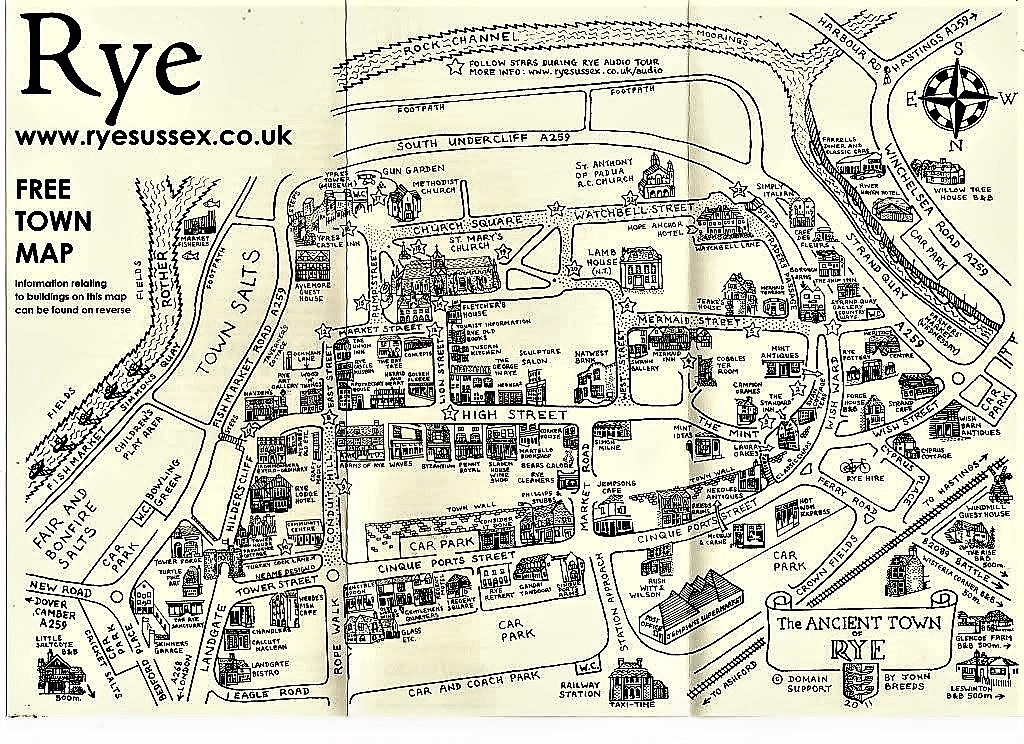
Rye is a lovely town stranded high upon a hill some two miles distant from the links at Camber Sands. The warren of lanes demand more than a cursory visit and will greatly reward any that make the effort to explore. Originally attached to Hastings as an Ancient Town in 1189, Rye eventually became a member of the Cinque Ports Confederation. Due to the vagaries of storms and silting, by 1560 the Cinque Ports were no longer vital bastions against invasion. Changing its colours from a naval port, to entrepot port, to smuggling port, to fishing port to tourist port, Rye continues to be a vibrant town rich in history. Virtually all that remains of Rye's Cinque Ports days is Ypres (the locals pronounce it wipers) Tower, once part of the Rye Castle walls.
Town Hall & St Mary's...separating church and state has long been a problem in British politics.
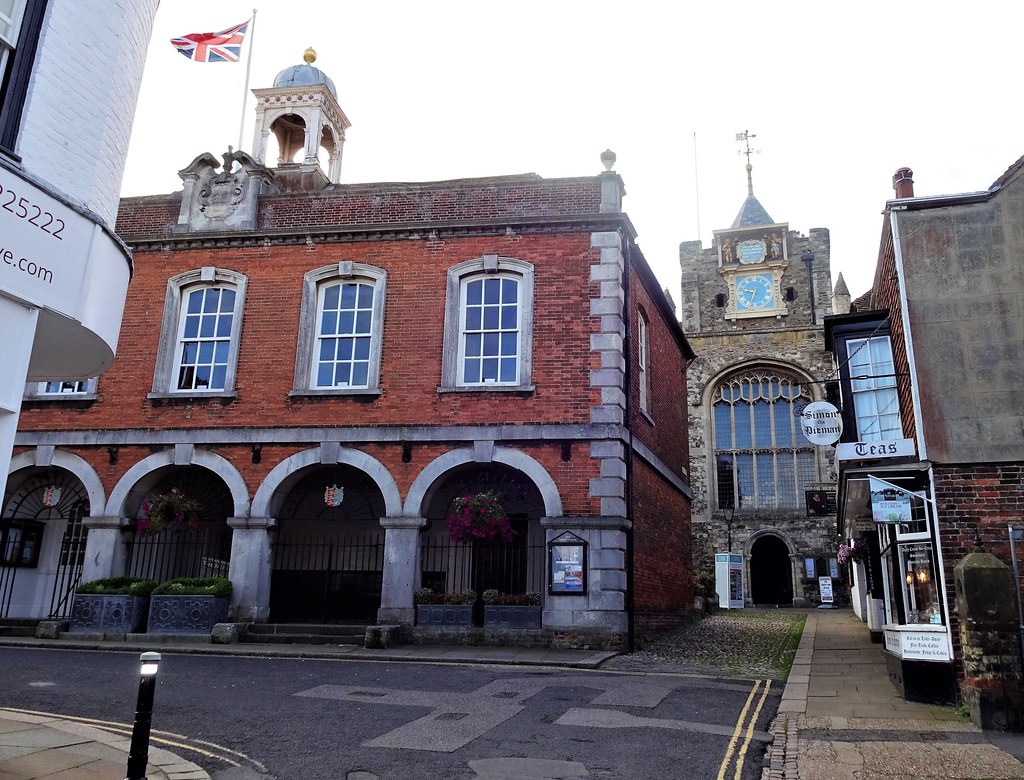
Church Square
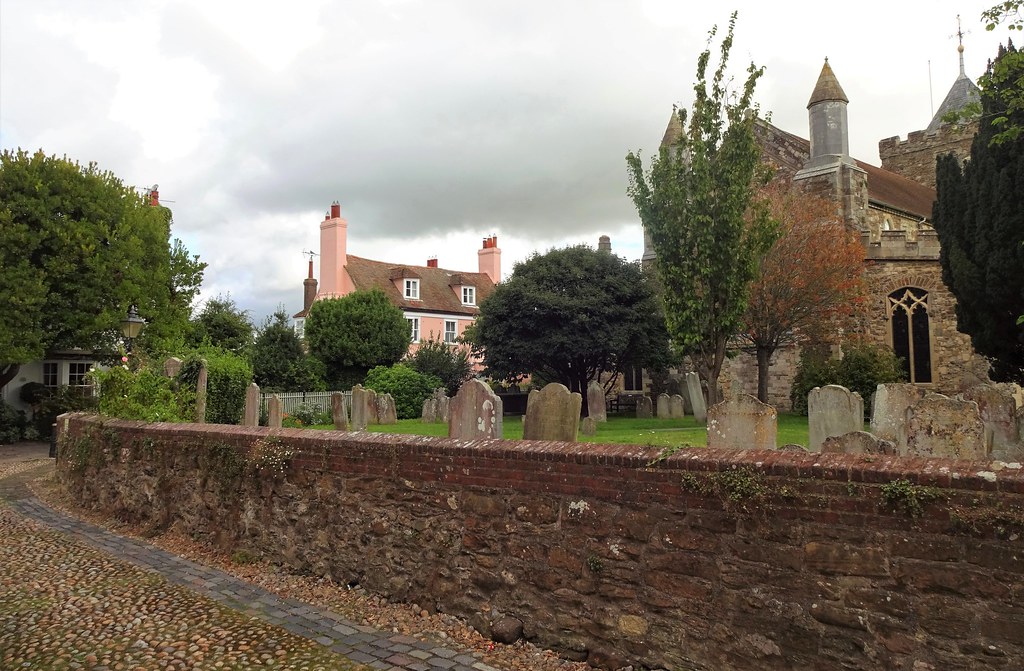
The less sombre end of Church Square
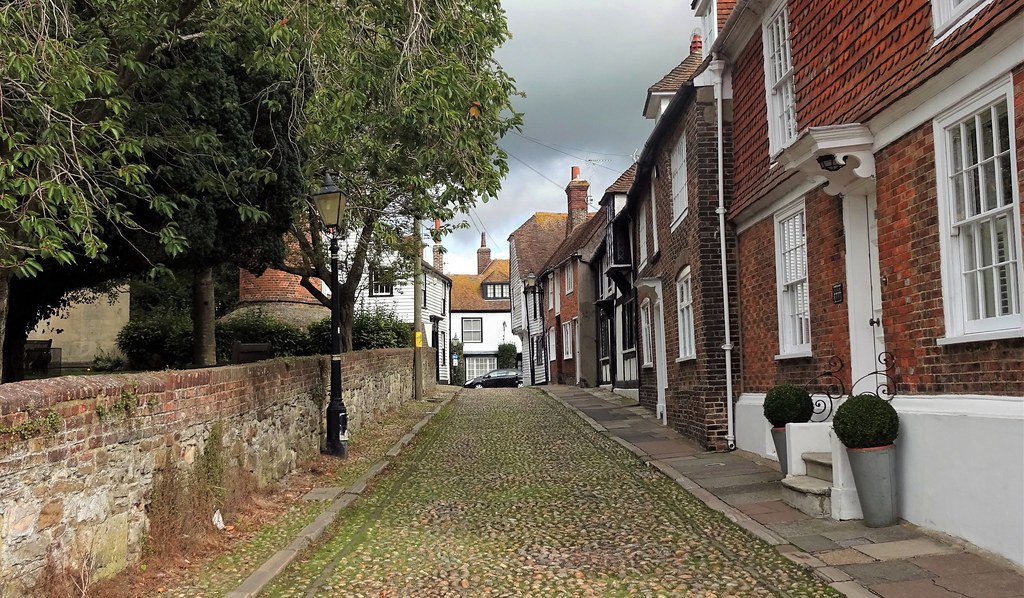
The Water Tower!
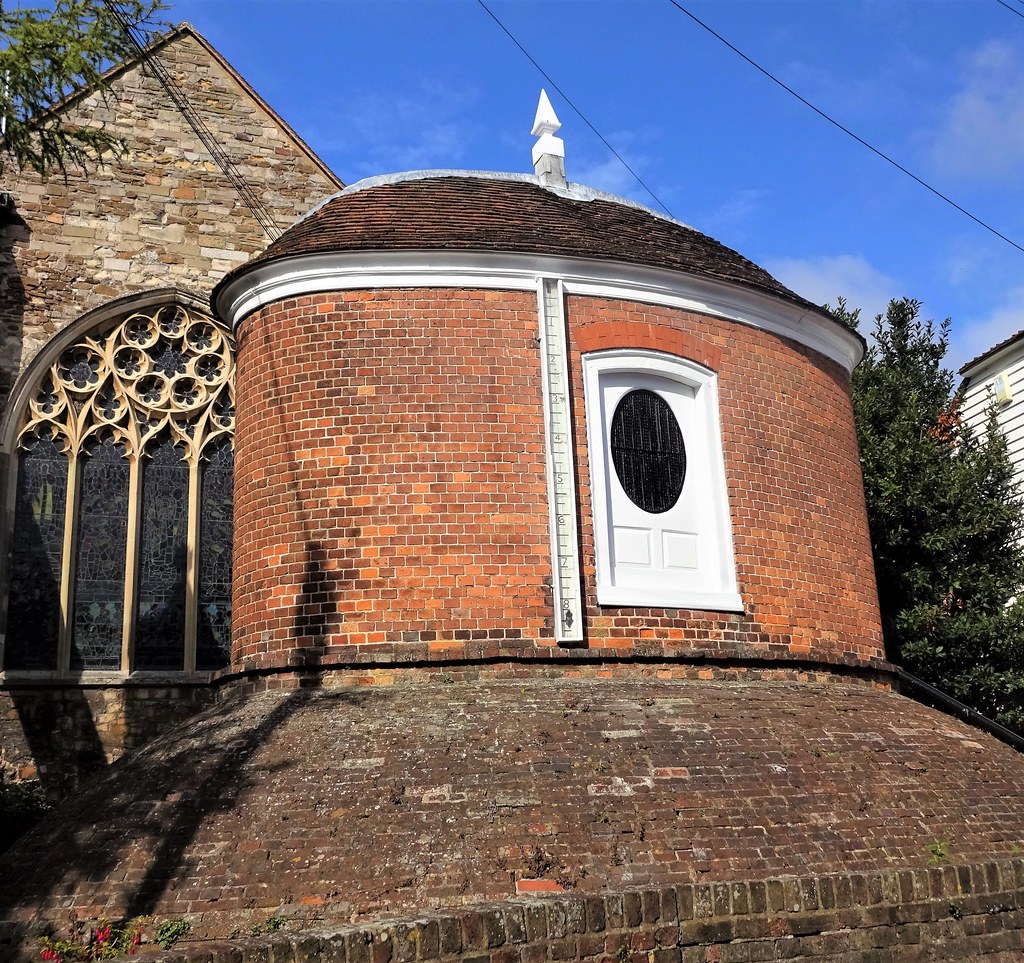
There doesn't appear to be a shortage of pubs.

The Standard is special due to its adjacent private tv lounge.
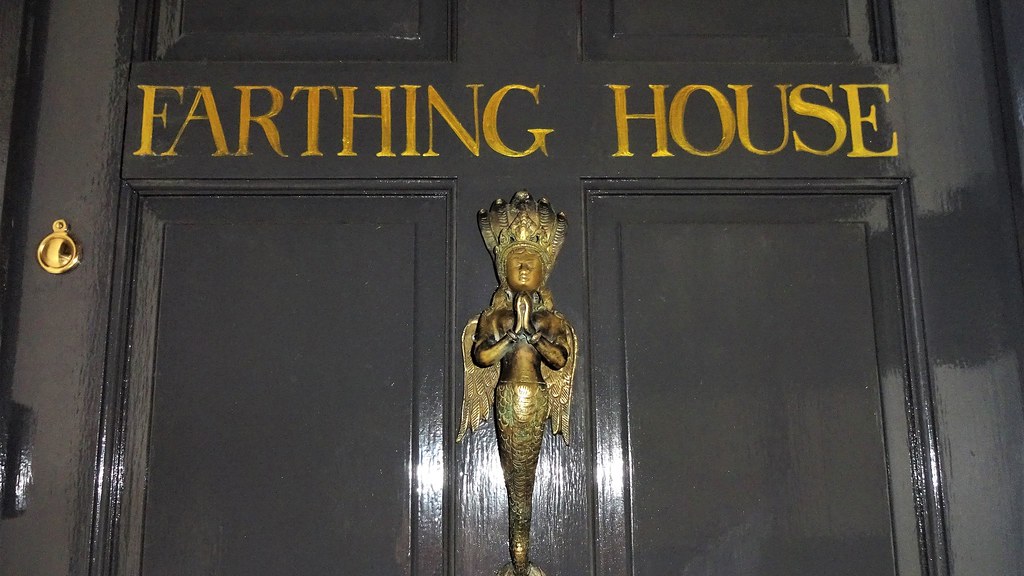
Oh yes, Henry James spent some time in Rye at Lamb House.
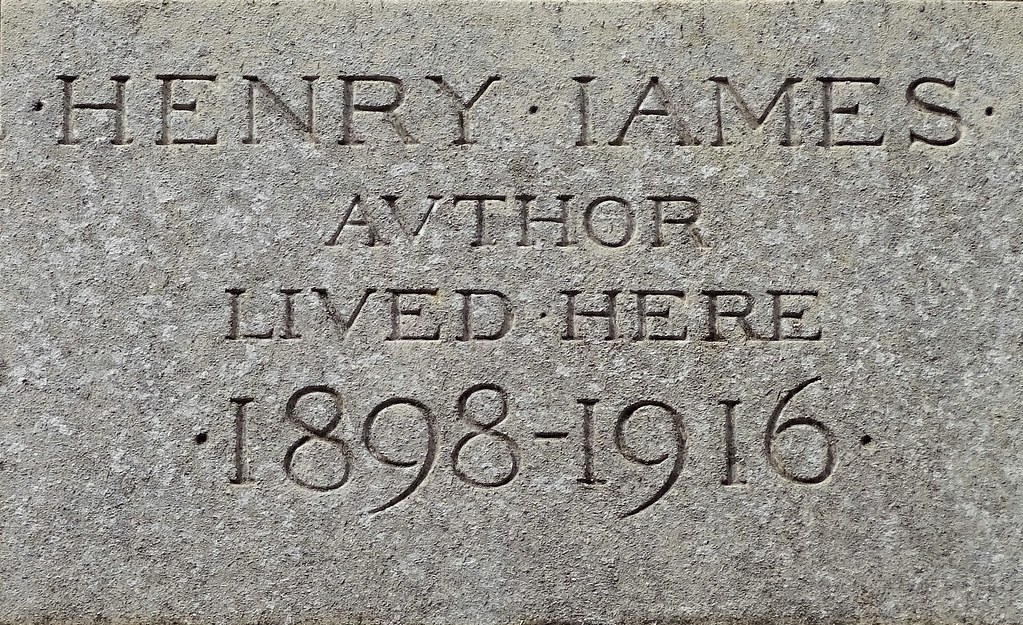
The club is storied for being the host of the President's Putter. While the Putter is not of much importance today, it has seen much more salubrious times when the leading British amateurs squared off for the honour of hanging a ball on the Putter. That isn't to suggest that the standard of golf today is by any means poor. Likely the lack of famous names is more due to the demised state of amateur golf compared to the heady days of Cyril Tolley, Earnest Holderness and Roger Wethered. Held in the depths of winter, The Putter is a scratch match play knockout between members of the Oxford & Cambridge Golfing Society. To merit membership of the society one must have earned a blue at one of the prospective universities. Incidentally, THE Putter has tripled in number. The original Putter was donated by John Low, the second Putter was the handiwork of Laurie Auchterlonie and since 1983 the one on which balls hang was crafted by Willie Park Sr.
My general impressions are several.
1. The course well and truly takes complete and full advantage of the land both in terms of routing and the undulations. There is a main dune ridge which effects the entire front 9 and a few holes on the back.
2. Many greens are smallish targets and difficult to hit especially when the ground is keen. However, several greens have superb ridges, humps and hollows short of them which dictate the best angle of attack when the trying to kick an approach in.
3. Several holes, many of which may be perceived as bland, particularly in the corner which contains #s 10, 11 and 17 are in fact better than given credit for. These flatter holes are a stark contrast to the sometimes uncontrolled rambunctious land. Second, when looked at closely, all have a bit of something about them. For instance, the visually horrific 11th is quite rare for a links in that it requires the player to take on a pond. #10 is quite different at Rye because of the approach slicing through gorse. #17 is flat, but deceptively long, with great bunkering down the left and a lovely ridge pushing balls right of the target.
4. Rye has a palpable element of the old fashioned about it even though much of the course is more from the modern era than not. #s 6 and 13 are wonderful examples of this old world charm.
5. The par 3s, while undeniably strong, are not what gives me the overwhelming sense of what Rye is about. I think the group of 4s is outstanding in their variety and the execution required to play them successfully.
6. Much like Pennard, Rye is a bumpy course which affords only the rare flat stance. When wind is also factored in, the player who can best control ball flight will gain an immense advantage.
Rye White Card...I notice that the yardage on every hole has changed except for the 6th, yet the total yardage is only 6 yards different! The important element of the card to note is the SSS of 71 to a par of 68....Rye is tough as old boots.

The Yellow Card and Course Map. The Yellow tees are far from easy and arguably the course is better from this distance.
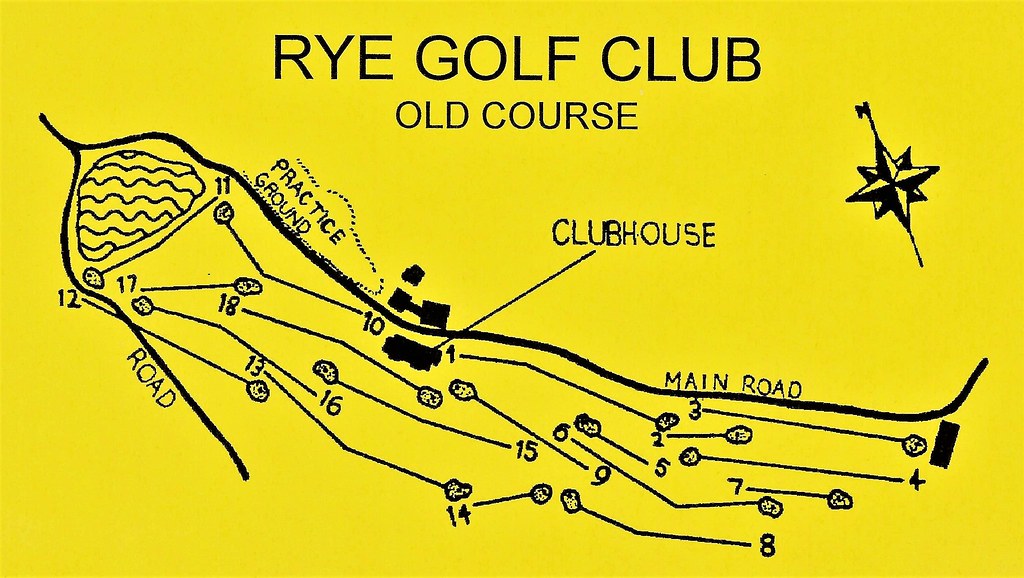

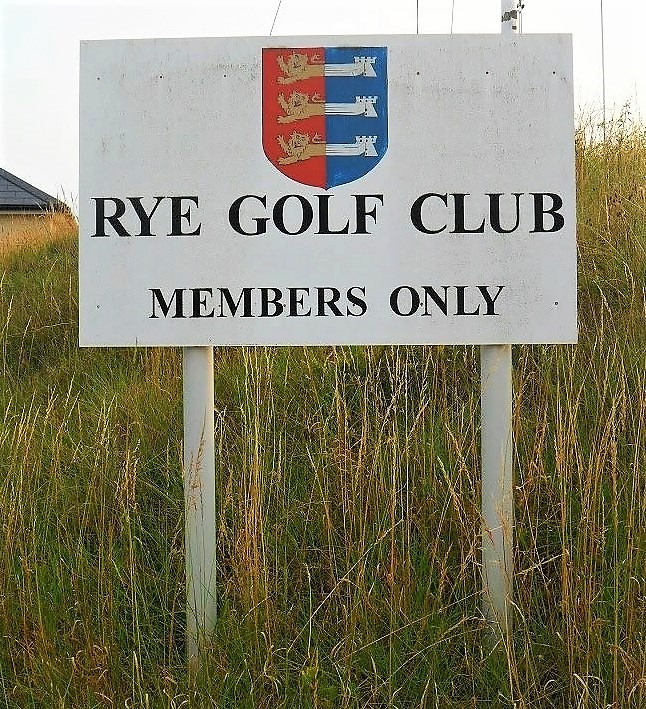
The course opens with a rather mild mannered par 5 which suits well as the first. Its a chance to get a jump on the card and many will rue not earning a birdie. I played the yellow tee, higher up to the right. Its a better hole from this position and 25 yards shorter...meaning a shot could be knocked off par! #2 is the first of Rye's famed short holes and one of two designed by Major Tippet just after WWII, the 7th being the other. The green is well protected on both sides with sand and in front with a swale just shy of the green which shoves approaches to the left bunker. Rye excells in sandless trouble short of greens.
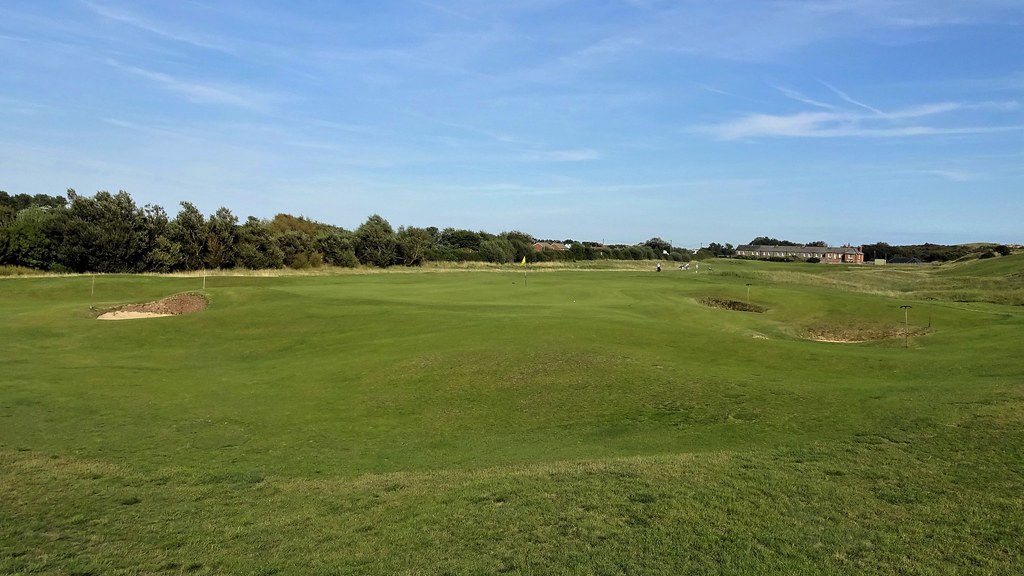
On the White card there are nine two-shotters over 400 yards in length of which the third is the primer. What makes this hole interesting is the outstanding Tom Simpson green-site. The player will come across these interfering ridges and folds fronting the greens all day long. We now climb to the top of a dune and turn back toward the house to play an engenious Sir Guy Campbell hole...one of six he created for Rye in 1938. Bunkerless, the 4th is completely unique in my experience; riding the top of a dune ridge for some 400 yards. In 1950, while repairing WWII damage, Major Tippet pushed the green back to it's present position. It is surprising that Rye is not more well thought of in GB&I because it certainly has all the elements of grand golf.
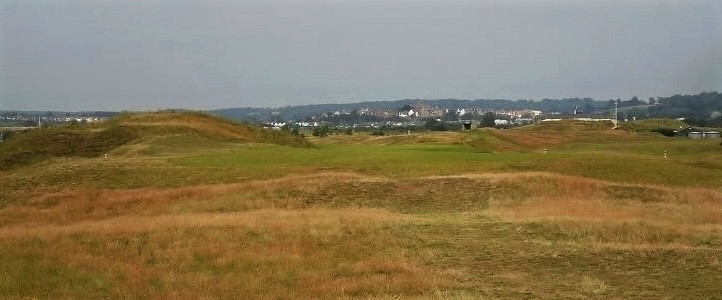
Looking back to the tee.
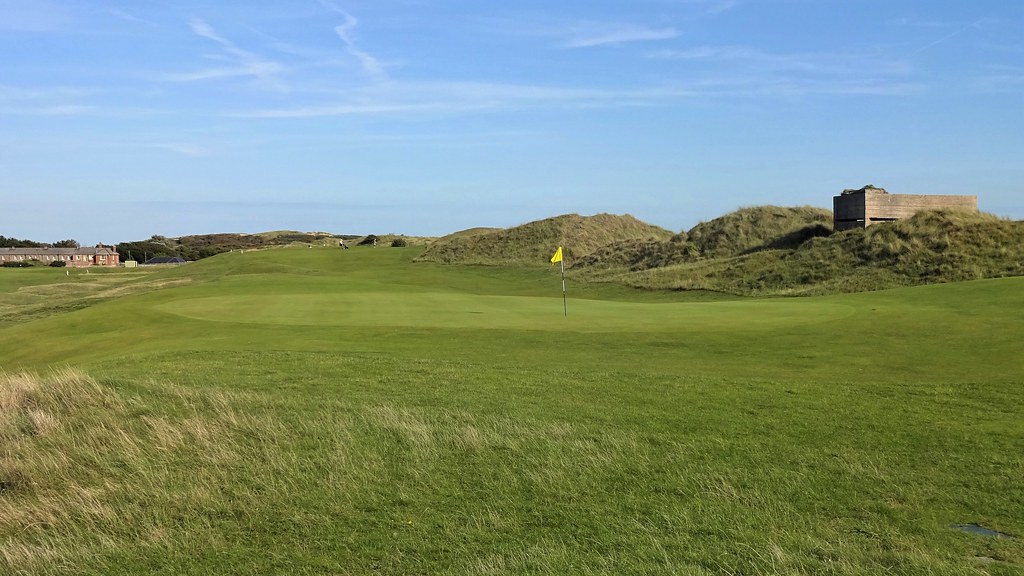
The second of this stellar set of 3s has the tee on the same ridge as the 4th, but the green is perched on another ridge. This change came in 1907 when several alterations were made to the orginal layout. It is noted that both Braid and and Darwin approved of the changes. It is thought that the green has sunk a bit, losing its convex shape, but "A truly noble hole it is - from a high tee across a chasm to a plateau green, with a drop into nothingness on either side of it." Looking back to the tee with the 6th fairway to the right and the 4th in the background. It is quite evident how compact Rye is and why it is a walker's delight.
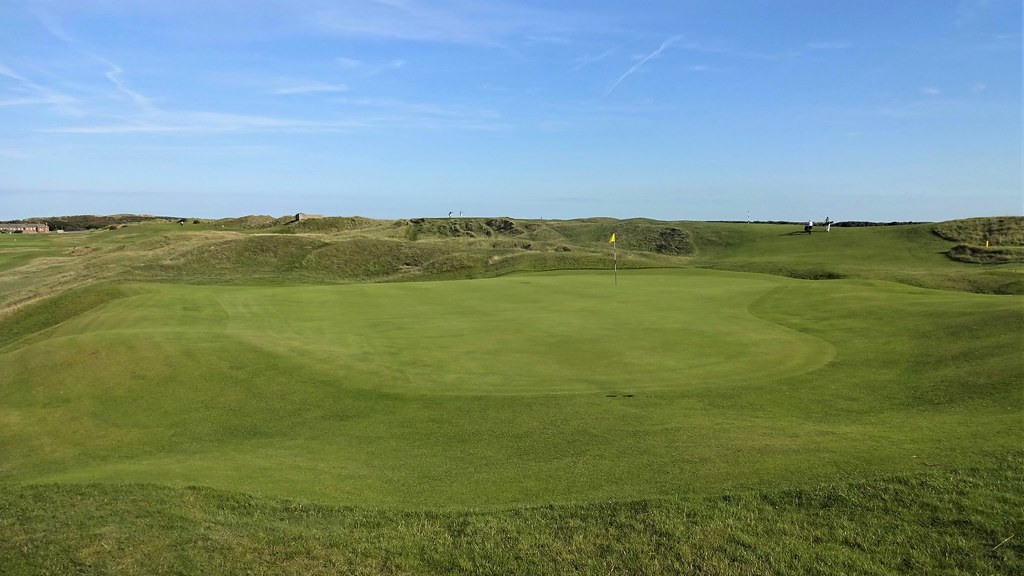
The player now turns away from the house again to play the 6th and what a wonderful spot it is. The 9th tee and green, 18th green, 5th tee and green and 4th green are all easily viewed. The blind tee shot over the dune ridge turns hard left. At 468 yards with penal bunkers both sides of the kick up zone for the green, this hole is as difficult as they come.
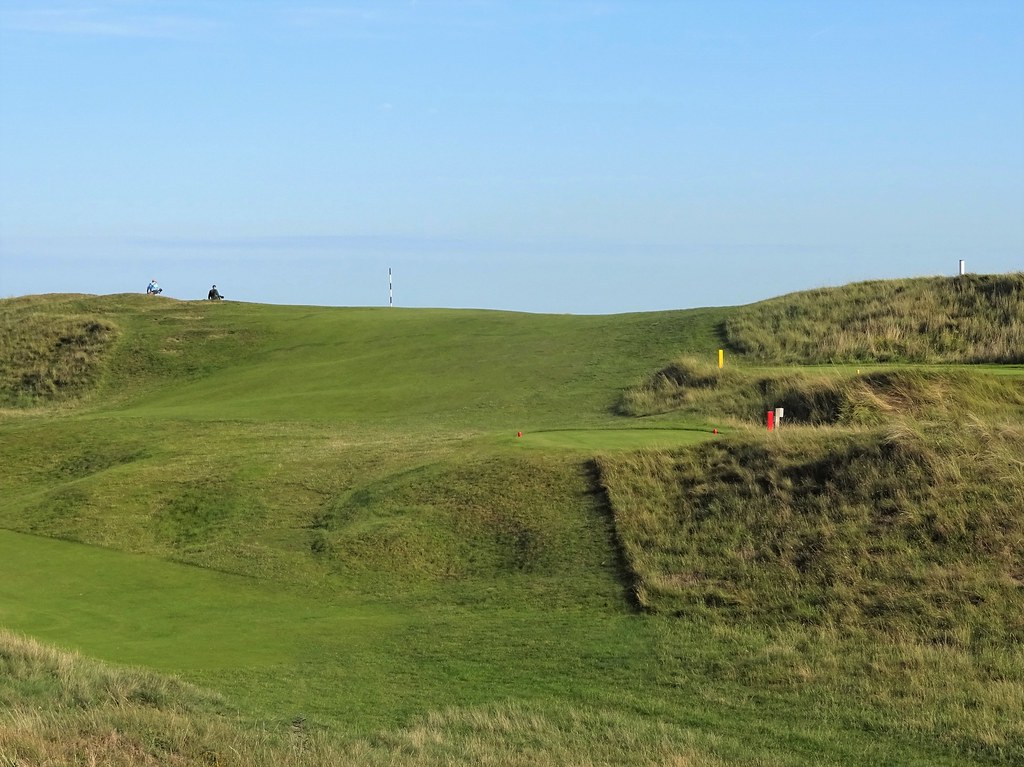
The view from the top of the ridge...not a bad par 4 from here!
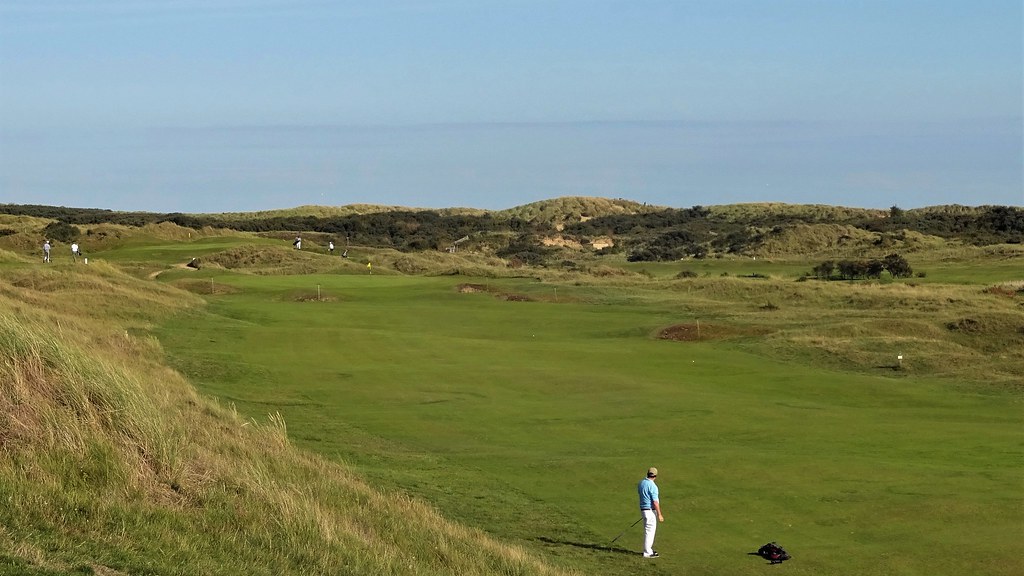
The green is well defended. I am not sure what the club hopes to achieve with the upright rakes, but they look bloody awful. One Pest commented that the rakes were great for locating bunkers!
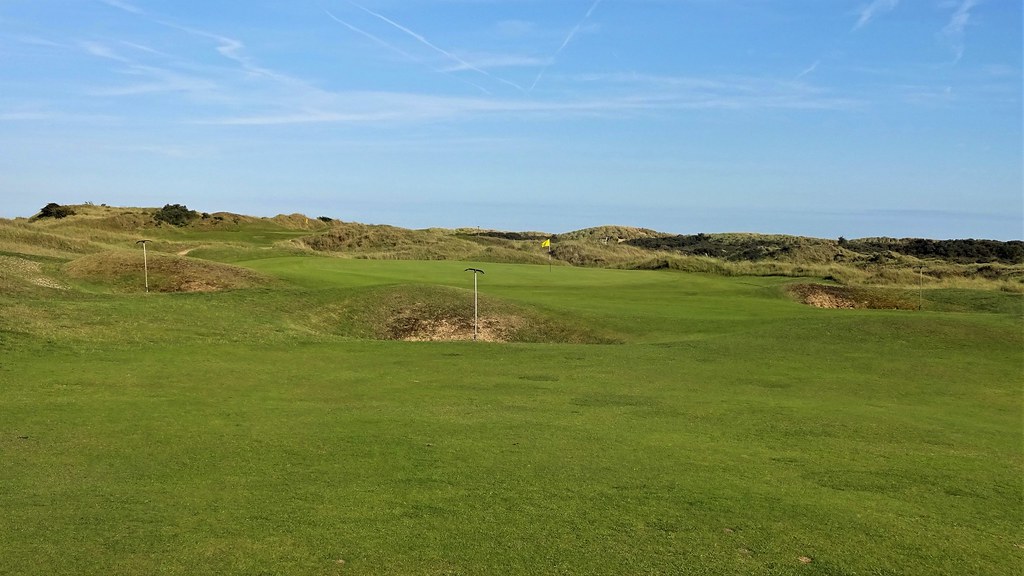
In this photo left of the green, the reader gets a glimpse of the land prior to the creaton of the Jubilee Course.

The par 3s come fast and furious and it is essential to play them well to keep a card going. The 7th is a curious hole which I don't quite get. I suspect the westerly wind (from behind) we had today may be slightly unusual because trying to hit this green requires quite a bit of luck. There is a bunker down below the two short wooden walls (a feature of Rye I don't at all like) which necessitates trying to bounce one in from the left. Its doable, but I think any choice of shot here with a tail wind is low percentage.

A better perspective of the sloping green.
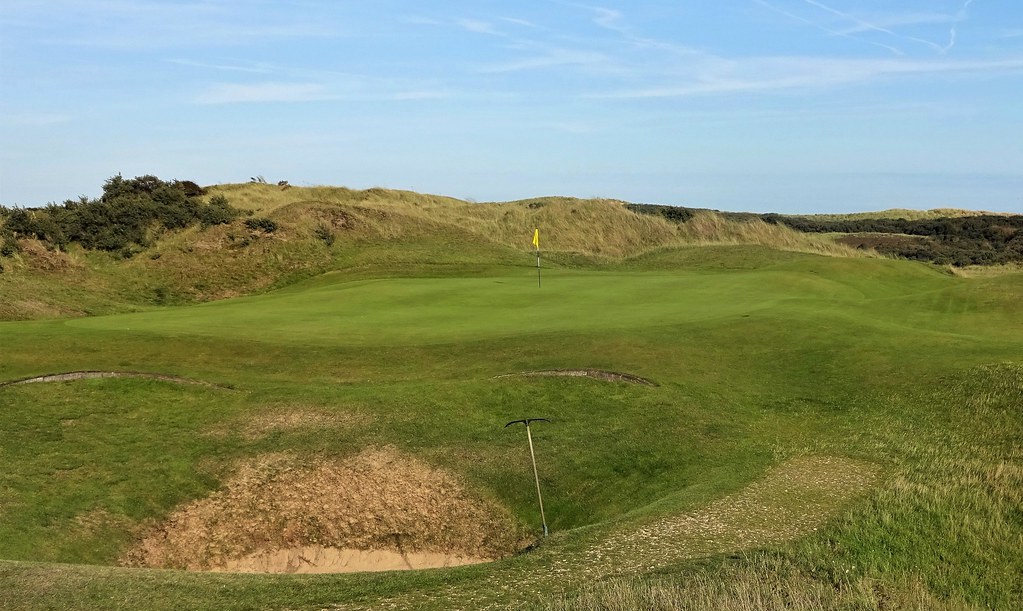
#8 is one of those holes some may nominate for less than good. I am not sure I would agree. I like the temptation of seeing the green from the tee. Its easy to be drawn to the direct line rather than playing the hole as a dogleg. Hitting the second from the right is no bargain as there are humps on this side of the fairway and large bank of vegetation (recently cleared, but still nasty) which looms ever so close to the approach line.
We finally get some respite on the 9th - a drivable par 4 which follows a natural valley ploughing up into the dune. The bunkers down the left are the main concern off the tee if one uses driver. The lay of the land pushes balls down toward them with alarming efficiency. Simpson created this hole and it is thought he believed the hole was too straight forward. Well, not from the yellow tee. Being further right than the white tee, it is a far more difficult drive because the terrain is now working against the player...bringing the bunkers more into play. The photo below is from near the 15th tee.
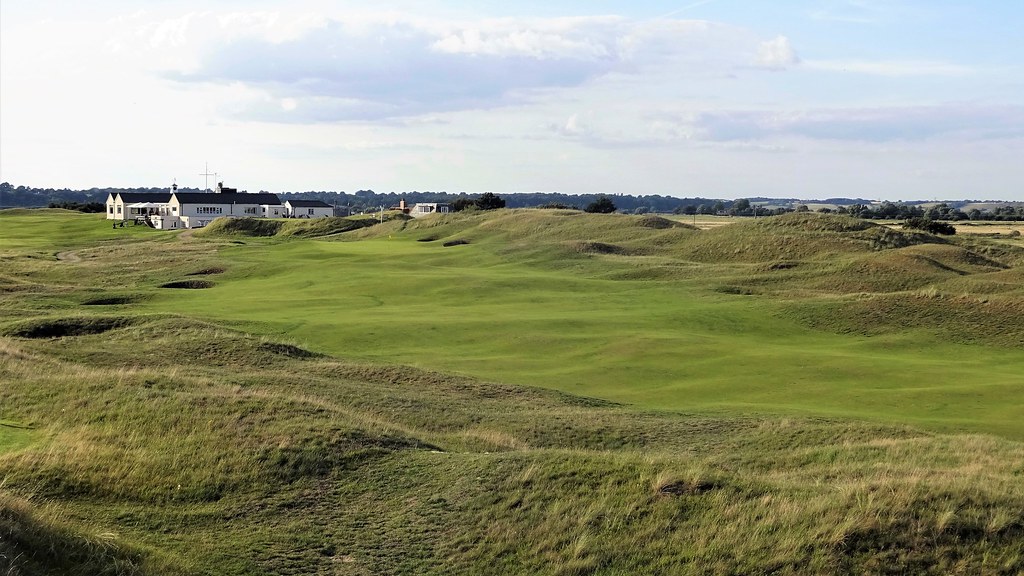
More evidence of grief shy of the green.
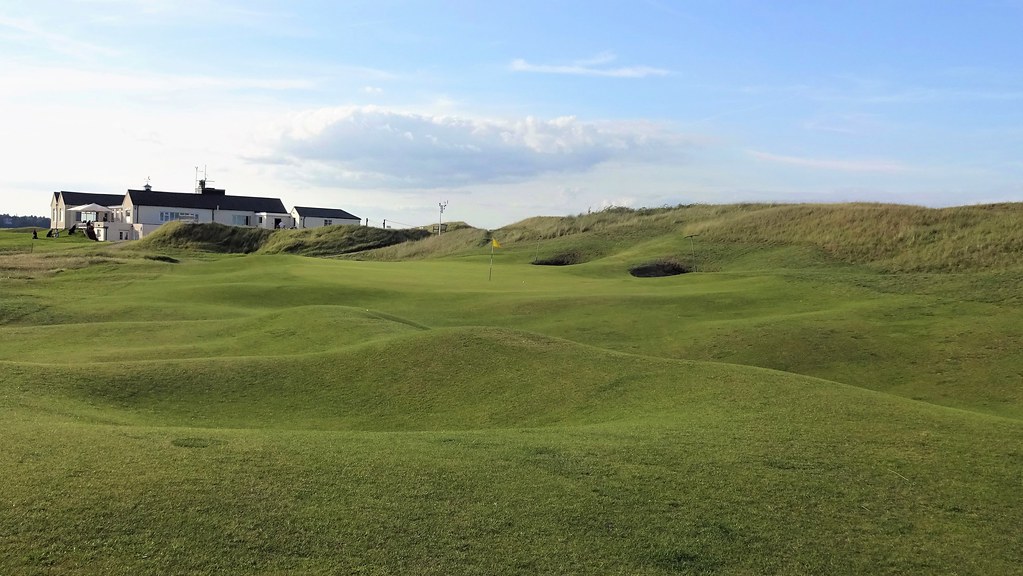

The turn takes golfers to the least admirable section of the course, #s 10 & 11. As mentioned in the intro, both holes have some redeeming features and I can't help thinking that if #11 had huge fronting bunkers or a huge sandy waste on the right to be carried rather than the pond than it would be seen as a masterpiece of old age architecture. Still, the pond is jarring and to make matters worse, the huge harbour building in the background kills any sense of visual flavour this hole may bring. Despite this, 11 is a strategically sound hole. In any case, the extracted gravel which created the pond was a financial saviour of the club.
#12 heads back into more interesting ground. Play crosses the line of the old Rye to the Camber rail line which now serves as a road. Approaching from the left of the fairway means playing through the angled swale short of the green. Below is Rye Harbour.
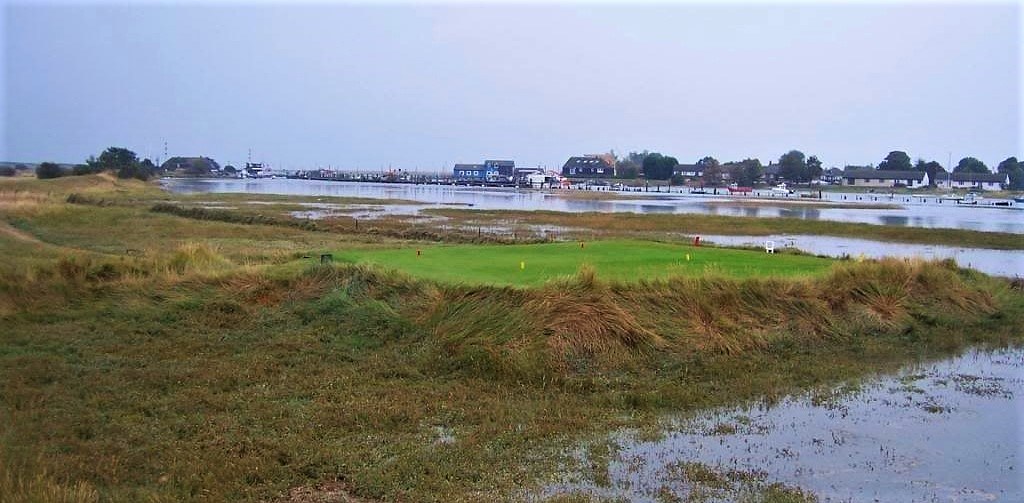
Unlucky 13 has to be the pick of the bunch as the controversial hole...even from its inception back in 1907 by CW Archer, Chair of the Green Committe. The golfer plays over a low ridge to a fairway angled to the left then over a high ridge to a green in the flats beyond. These flats were at times under a rising tide!
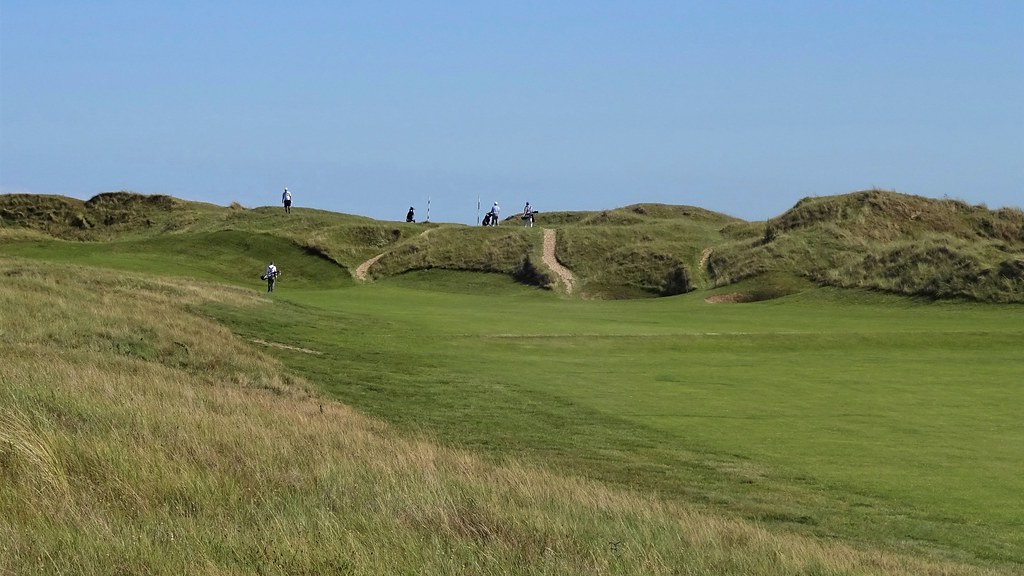
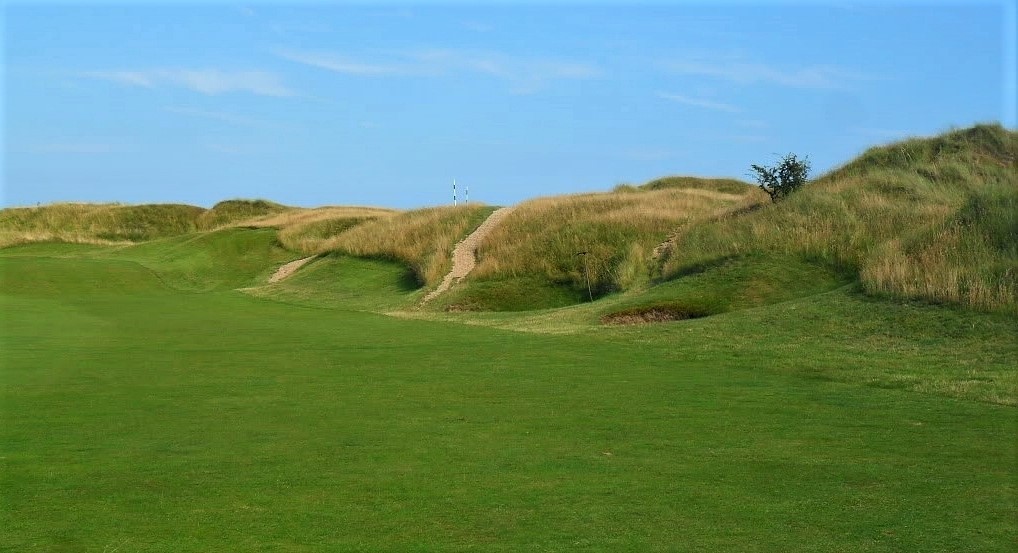
Once over the second ridge, which I think was created from a turfed over old seawall, this is what the green looks like.
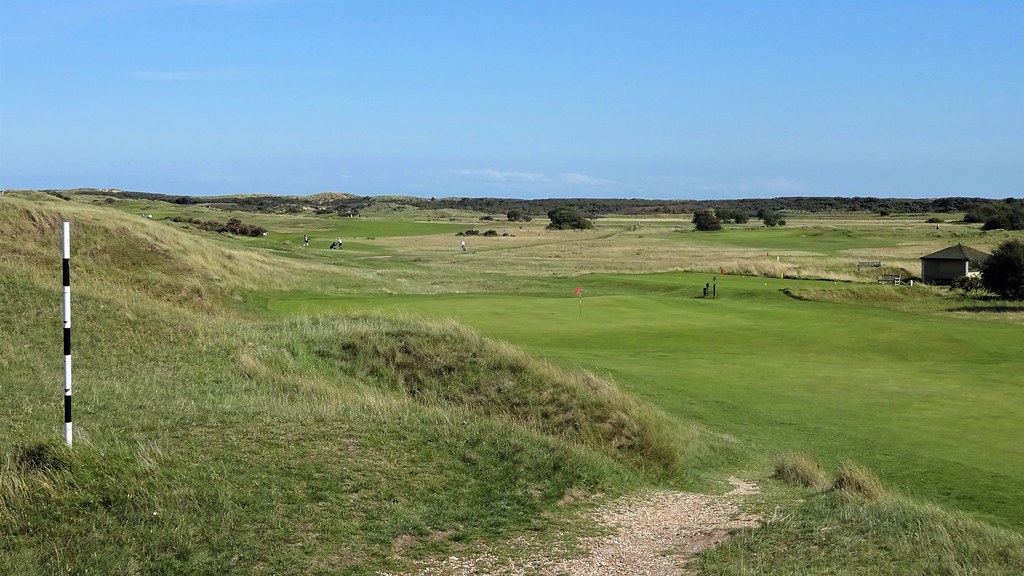
The 14th is very reminiscent of Dornoch's 6th with it's deceptively narrow green. This was the first hole created by Campbell's 1938 efforts and it eliminated Simpson's blind short hole played to the far side of the dune.
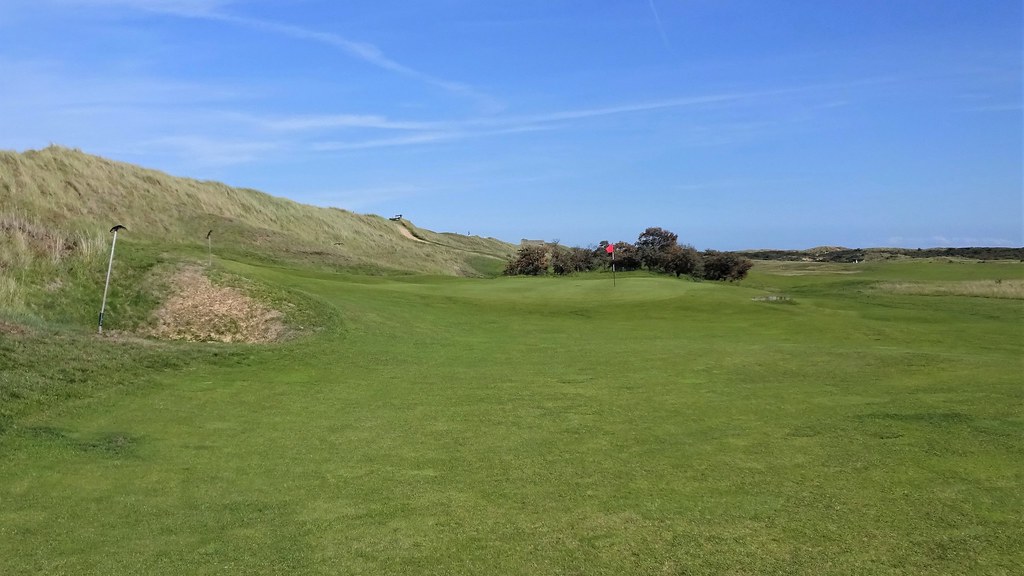
The tee for the 15th takes golfers back over the old sea wall for a very clever hole which is routed left rather than straight at the green. Even if the player resists temptation on the tee by staying left the eye is drawn more toward the middle and right for the approach. However, there is a wee blind ridge which kills the kick up approach. Banging one down the left follows the fairway and leads to the hole as if it were a bob sled run.
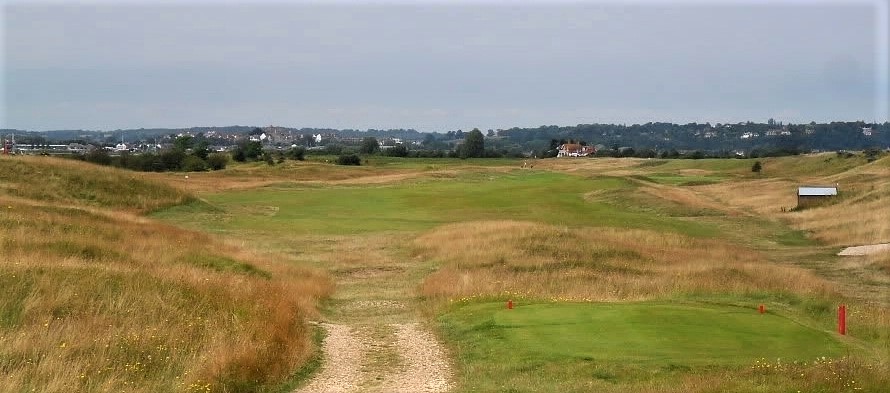
Even a place such as Rye doesn't get everything right - this fairway line is atrocious.

The 16th continues the fine run home with a hole that competes with the 4th as the best two-shotter at Rye. Like the 6th, the hole turns left over a ridge, but this time there is a large bunker protecting the corner which gobbles up hooks turning off the ridge.
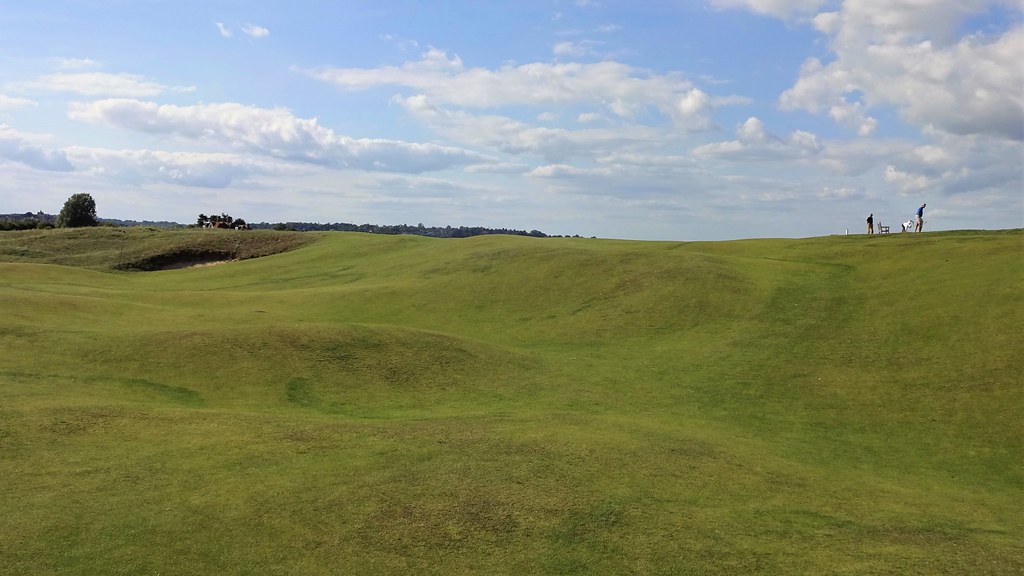
It is difficult to make out where the green starts from the landing zone. This photo is taken from a spot closer to the green which gives the reader a better idea of the green-site. On a clear day Rye stands proudly in the background.
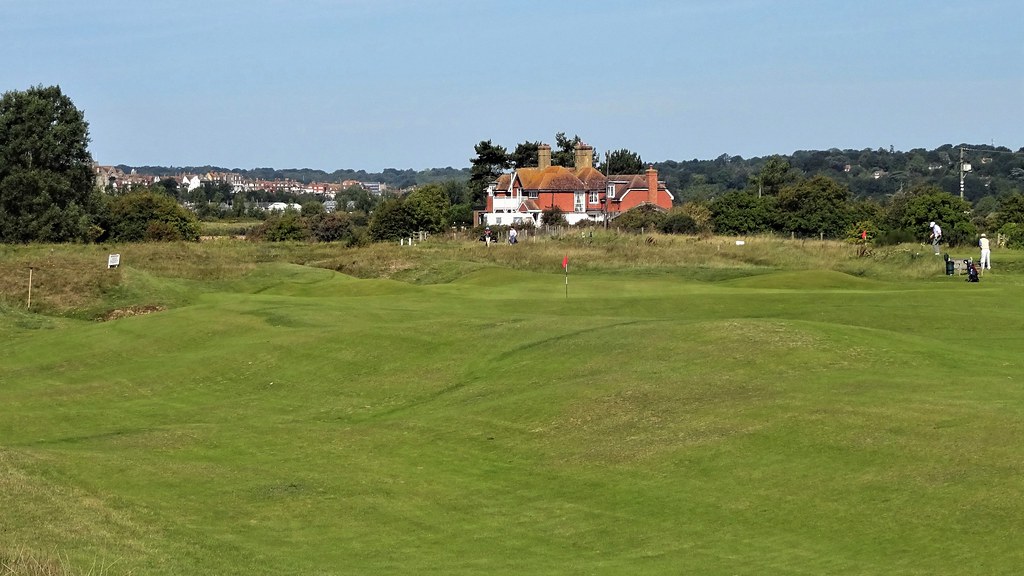
Mayday called this green a cracked bowl!

The final par 3 is visually the least enticing of the one-shotters, but it is none the worse for that. I think it is an excellent contrast to the others which are either raised or on plateaux. At 200+ yards the 17th continues the long hitting trend of the finishing run of holes. From this view short left of the green, the reader can see how shots will funnel left.

Darwin wrote that all of the changes made at Rye improved the course except for the 18th, which used to hit over the gaping Soup Bowl bunker.
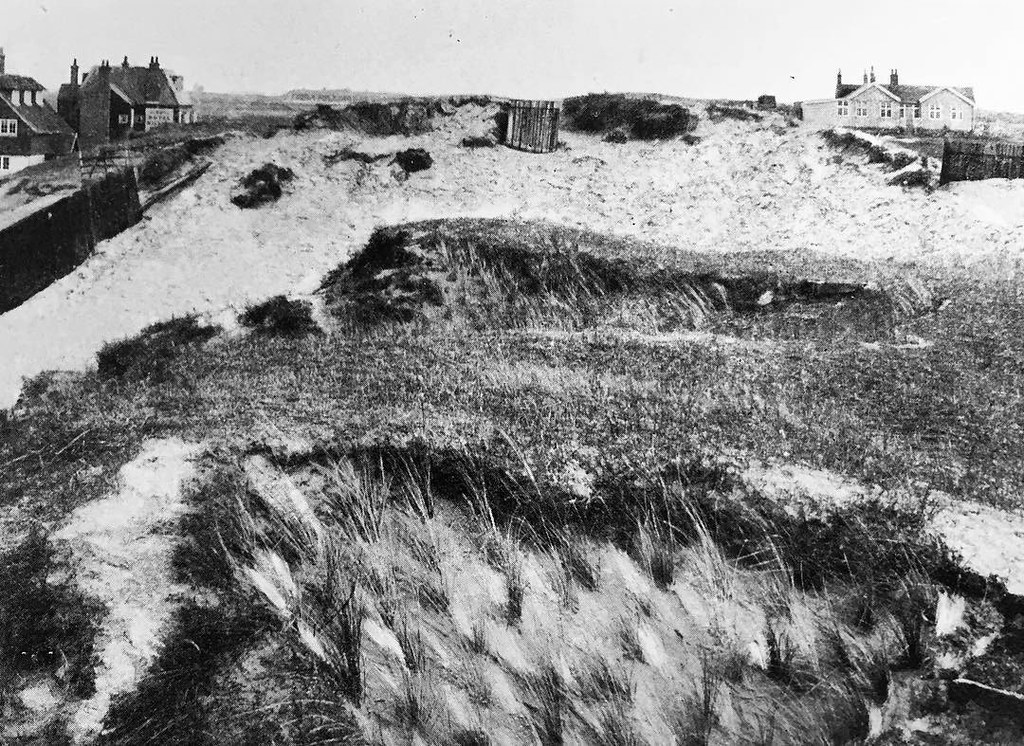

A better sense of the bunker's location.
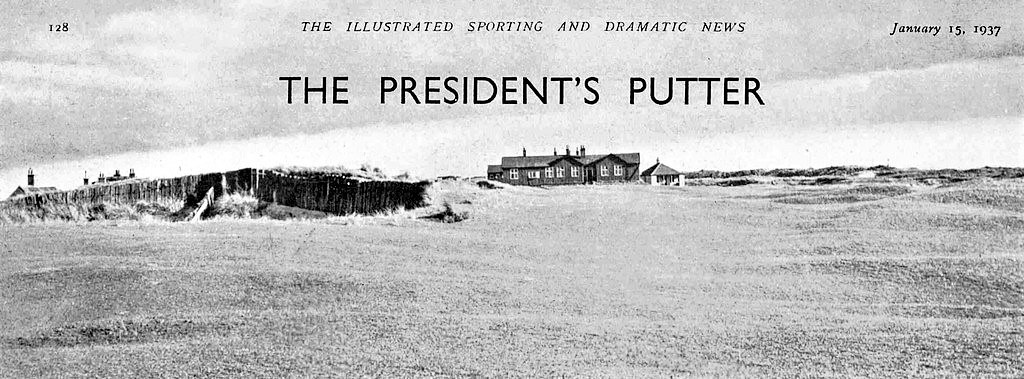
As an indirect consequence of the changes made due to the road, the final hole was altered. It may not be as good as the old hole, but the home hole is very fine in its own right. The tiger line is the clubhouse clock and one must not be right or his chances of earning a par will be severely hampered.
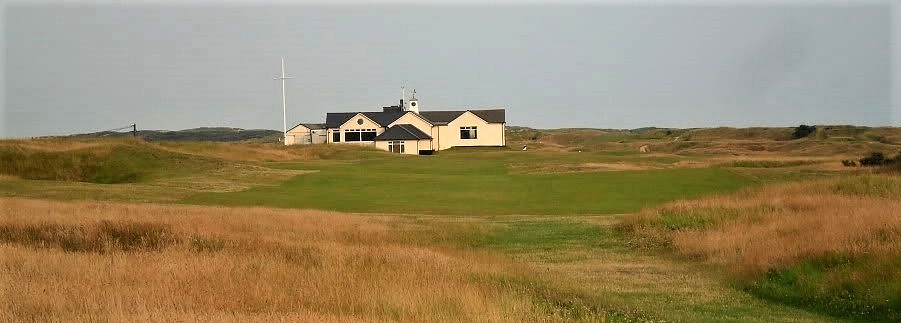
Its a bumpy road to the final green.
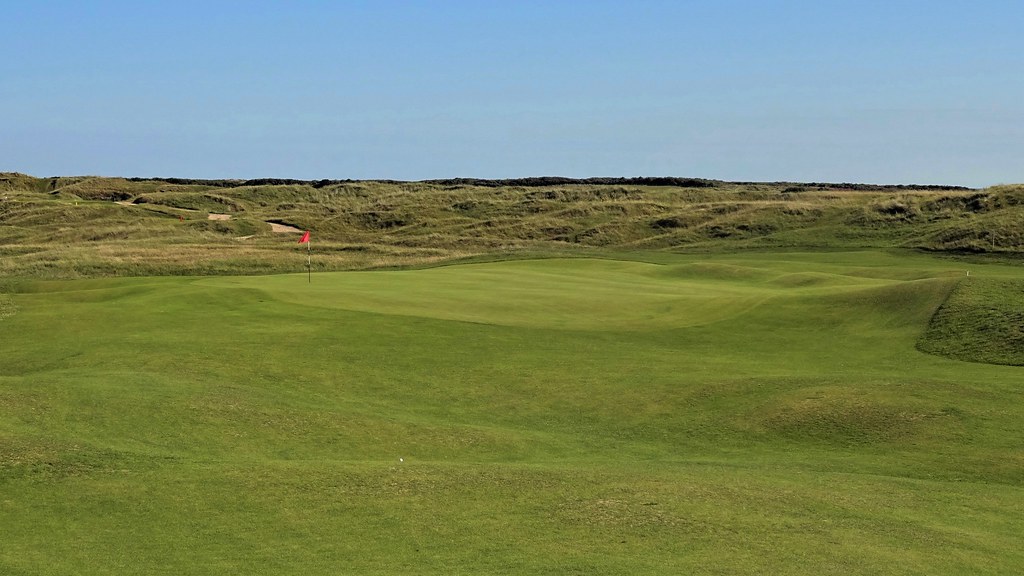
The club thinks of everything; the dormy house and pro shop.
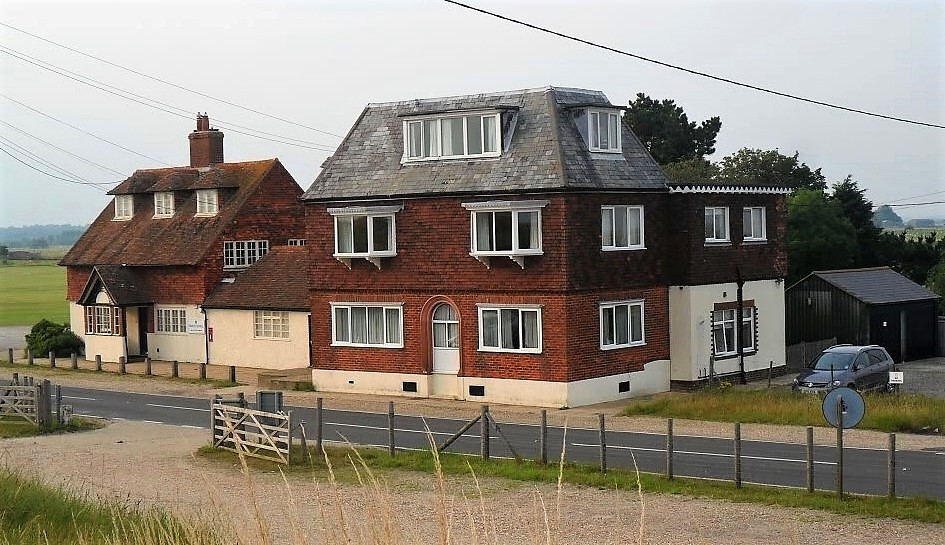
Well, thats Rye. Its a tough little course as its SSS of 71 against a par of 68 indicates. The course requires all the shots and more importantly, imagination like few others do. Patric Dickinson likened Rye to looking at a wild cat through a magnifying glass and imagining a tiger's fierceness. This is about an apt description of Rye as can be conjured. The clubhouse, a gem of modesty which perfectly suits the ambience of the course and club, affords lovely views of Rye, its harbour and the Fairlight Cliff off in the distance. Somewhere between the sky, the land and one's imagination, the sea can just be made out. 2*. 2017
Ran's Review.
http://golfclubatlas.com/courses-by-country/england/rye1/Ciao